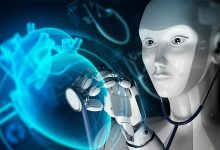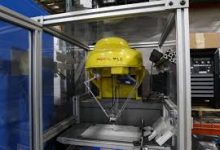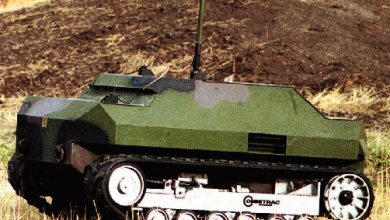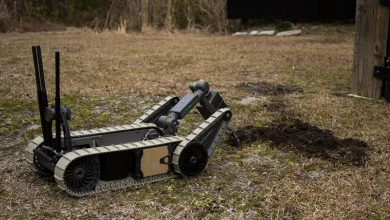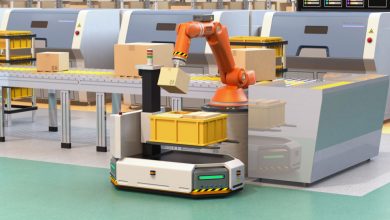Robotics: An Overview
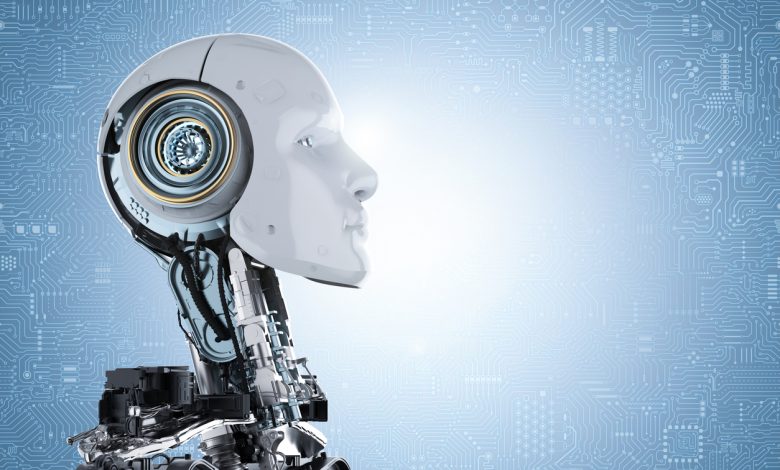
Introduction:
Robotics is a broad area that mixes computer science and engineering. It focuses on designing, building, operating, and using robots to assist humans. Robotics has revolutionized various industries, from industrial automation to space exploration, reshaping our lives, work, and interactions with the world. This exploration delves into the intricacies of robotics, its origins, current state, and future possibilities, tracing and examining its current form.
Robotics is a technology that has transformed various aspects of modern life, from factories to hospitals, exploration to entertainment. It has revolutionized industries and processes and improved the quality of life for millions worldwide. This exploration delves into robotics’s evolution, applications, challenges, and profound impact on society.

History of Robotics:
Robotics has a long history, dating back to ancient Greek engineer Hero of Alexandria’s Pneumatical and Automata texts. Isaac Asimov, a science fiction author, coined the modern concept 1942 in his book “Runaround,” highlighting hundreds of automated machines. The history of robotics spans centuries, tracing its origins, milestones, and transformative impact on society. From ancient automata to modern robots, this comprehensive exploration explores the rich tapestry of robotics, highlighting its fascination with creating machines in our likeness. The history of robotics is a testament to human ingenuity, creativity, and progress. From ancient automata to modern robots, it has evolved through curiosity, innovation, and technological advancement. As we enter a new era of robotic innovation, we must reflect on past lessons and embrace opportunities and challenges by harnessing robotics for the greater good, enriching each other’s lives, and pushing boundaries.
- Ancient Origins:
Robotics’ origins can be traced back to ancient civilizations, where craftsmen and inventors explored the possibility of creating machines that imitated life. In ancient Greece, the Antikythera Mechanism was a complex device used for astronomical calculations, while in ancient China, intricate mechanical toys, animals, and musical instruments were created. Robotics’ origins can be traced back to ancient civilizations, where early inventors and artisans created mechanical devices and automata that mimicked human and animal movements. Legendary figures in ancient Greece and China created mechanical birds, self-propelled machines, and elaborate mechanical toys, showcasing early attempts at automation and robotics.

- Medieval Marvels:
During the Middle Ages, the fascination with automata grew, with artisans and scholars experimenting with mechanical devices and clockwork mechanisms. Al-Jazari, a 12th-century Arab engineer, designed automated machines like a humanoid robot serving drinks and a programmable musical instrument called the “Elephant Clock,” showcasing the ingenuity and creativity of medieval inventors. The history of robotics is a captivating narrative that spans centuries, weaving through the annals of human civilization and reflecting our perennial fascination with creating machines in our likeness. From the ancient automata of antiquity to the sophisticated robots of the modern era, this comprehensive exploration unravels the rich tapestry of the history of robotics, tracing its origins, milestones, and transformative impact on society.
- Industrial Revolution:
The Industrial Revolution in the 18th and 19th centuries significantly influenced robotics history, with the mechanization of manufacturing processes leading to early automation and the growth of steam power and mechanical engineering, paving the way for modern robotics. The Industrial Revolution marked a significant shift in robotics history, with advancements in engineering and manufacturing leading to the mechanization of labor and industrial automation. Inventors like Joseph Jacquard and Charles Babbage developed mechanical looms and programmable machines, laying the groundwork for textile production automation and early computing. The rise of steam power and mass production techniques further fueled the development of factories’ mechanical devices and automated systems.
- Emergence of Modern Robotics:
The 20th century saw the rise of modern robotics, influenced by advancements in engineering, computing, and artificial intelligence. The first programmable computer, invented by Alan Turing in the 1940s, laid the groundwork for digital computing and robotic control systems. In the 1960s, the Unimate, a robotic arm for assembly line tasks in General Motors’ factories, marked the beginning of a new era of automation in manufacturing, paving the way for rapid robotics expansion in the future.
- Advancements in Robotics:
Due to advancements in electronics, sensors, and artificial intelligence, robotics has experienced exponential growth and innovation in the 20th and 21st centuries. Microprocessors and sensors have enabled robots to become more intelligent, agile, and autonomous, leading to diverse robotic systems for various applications. Robotics has revolutionized industries, enhanced productivity, and improved quality of life, affecting every aspect of modern life.
- Current State and Future Prospects:
Robotics is rapidly evolving, with advancements in humanoid, soft, and swarm robotics presenting new opportunities for innovation. However, ethical, safety, and regulation concerns arise as robots become more integrated into society. This prompts discussions about responsible deployment and usage of robotic systems. The future of robotics holds boundless possibilities, with robots expected to address global challenges, improve human well-being, and shape history.
- Expansion of Robotics:
The 20th and 21st centuries saw a significant increase in robotics research and development, driven by advancements in computing power, sensor technology, and artificial intelligence. Robots have evolved from simple mechanical arms to sophisticated systems capable of autonomous navigation, perception, and decision-making. They have been used in various domains, including healthcare, exploration, agriculture, and entertainment. Surgical robots like the da Vinci Surgical System and exploration robots like NASA’s Mars rovers have revolutionized various fields.
- Rise of Modern Robotics:
Modern robotics emerged in the 20th century, fueled by electronics, computing, and artificial intelligence advancements. The Unimate, invented by George Devol, was the first programmable robotic arm used in General Motors’ factories. The Unimate’s integration of sensors, actuators, and control systems revolutionized manufacturing processes and paved the way for the automation of industries worldwide. The development of the Unimate laid the foundation for the creation of industrial robots in the 1950s and 1960s.
- The Renaissance and Beyond:
During the Renaissance, a renewed interest in automata and mechanical contraptions was driven by scientific curiosity and artistic innovation. Leonardo da Vinci, a polymath, created intricate mechanical figures, while European clockmakers and artisans created elaborate automata, like the Jaquet-Droz automaton dolls, which captivated audiences with their lifelike movements and expressions.
- Future Horizons:
The history of robotics serves as a roadmap for future AI, machine learning, and robotics advancements. These advancements will revolutionize healthcare, transportation, agriculture, and manufacturing. Collaborative robots can enhance workplace productivity and safety, while swarm robotics, inspired by social insects, offers new ways to coordinate and cooperate among robotic systems.

Components of a Robotics:
Robots consist of a power supply, actuators, sensors, and a controller. The power supply supplies energy, actuators convert stored energy into movement, sensors provide environmental information, and the controller acts as the robot’s brain, controlling its activities and actions. These components work together to ensure the robot’s functionality. Robotics consists of various parts that work together autonomously or with human guidance. These components enable robots to perceive their environment, make decisions, and execute actions. This exploration delves into robotic components’ intricacies, functions, types, and significance in automation.
- Actuators:
Actuators are the muscles of a robot that convert energy into mechanical motion, providing the force and torque needed for movement and manipulation. Electric actuators like DC motors and stepper motors are commonly used in robotics for precision and reliability, while hydraulic and pneumatic actuators are used in industrial automation and heavy-duty machinery for high force and power applications.
- Sensors:
Sensors in robotics enable robots to perceive and interact with their environment. They include cameras, LIDAR, ultrasonic sensors, and inertial measurement units (IMUs). Cameras capture visual information, while LIDAR generates 3D maps for autonomous navigation. Ultrasonic sensors detect distance and proximity, while IMUs provide data on orientation and acceleration, enhancing spatial awareness and motion control. These sensors are essential for autonomous navigation and obstacle avoidance.
- Controllers:
Robotic controllers are the brains of a robot, processing sensory inputs, executing algorithms, and generating commands. Microcontrollers and microprocessors are used in robotics to control motor movements, implement feedback loops, and coordinate sensors and actuators. They run sophisticated algorithms like motion planning, pathfinding, and machine learning, enabling robots to make intelligent decisions and adapt to changing conditions in real-time.
- Power Supply:
Robots require a reliable power supply to operate, driving actuators, sensors, and control electronics. They can be powered by batteries, internal combustion engines, or external sources depending on their application and mobility requirements. Battery-powered robots are suitable for mobile robotics and consumer electronics, while internal combustion engines are used in larger robots like industrial vehicles and drones for extended runtime and high power output. External power sources are suitable for stationary robots in industrial settings.
- End Effectors:
End effectors are tools or attachments on a robot’s arm or manipulator that enable it to interact with the environment and perform specific tasks. Common types include grippers, suction cups, and electromagnets. Specialized end effectors like welding torches, cutting tools, and 3D printers are used in industrial applications like welding, machining, and additive manufacturing. These end effectors can be designed for specific tasks or interchangeable for different applications. Robotics systems are built on the foundation of components, including actuators, sensors, controllers, power supplies, and end effectors. These components are essential for successful operation across various applications and industries. As robotics technology advances, innovations in component design, materials, and manufacturing techniques will drive the development of more capable, versatile, and intelligent robots, further expanding automation and robotics possibilities in our interconnected world.

Types of Robotics:
Robotics is a multidisciplinary field that includes various types of robots designed for specific tasks, classified by application, mobility, physical structure, or operation method, including common types.There are various types of robots, each designed to perform specific tasks. These include:
- Industrial Robots:
Industrial robots are widely used in manufacturing facilities to automate repetitive tasks. Equipped with articulated arms and specialized end-effectors, they perform assembly, welding, painting, and material handling tasks with precision. These robots revolutionize manufacturing processes by increasing productivity, reducing costs, and improving product quality across industries like automotive, electronics, and aerospace.
- Service Robots:
Service robots are designed to assist humans in non-manufacturing environments, such as cleaning, delivery, and humanoid assistants. Cleaning robots automate tasks, saving time and effort. Delivery robots transport goods autonomously, enhancing logistics and reducing manual labor. Humanoid assistants, equipped with speech recognition and natural language processing, interact with users in social and service settings, providing information, entertainment, and companionship. These robots come in various forms, including vacuum cleaners, floor scrubbers, and humanoid assistants.
- Medical Robots:
Medical robots are essential in healthcare, aiding in diagnosis, treatment, and patient care. Surgical robots like the da Vinci Surgical System enable minimally invasive procedures, reducing pain and improving patient outcomes. Rehabilitation robots provide personalized therapy and exercise routines for patients. Telepresence robots enable remote healthcare professionals to consult with patients and participate in medical procedures, expanding access to specialized care.
- Military and Defense Robots:
Armed forces use military and defense robots for reconnaissance, surveillance, and combat operations in hazardous environments. Unmanned aerial vehicles (UAVs) provide surveillance, intelligence gathering, and precision strikes, reducing human risk. UGVs, like bomb disposal and reconnaissance robots, perform tasks like explosive ordnance disposal, mine clearance, and reconnaissance in urban and battlefield environments, enhancing safety and effectiveness of military operations.
- Exploration Robots:
Exploration robots, such as NASA’s Mars rovers and autonomous underwater vehicles (AUVs), explore hazardous environments to gather data, conduct research, and perform tasks beyond human reach. These robots use sensors, cameras, and manipulators to navigate and interact with their surroundings in extreme conditions, advancing our understanding of planetary science and astrobiology. They also study marine ecosystems, map underwater terrain, and inspect underwater structures like pipelines and shipwrecks.
- Social Robots:
Social robots are designed to interact with humans in social and emotional contexts, providing companionship, assistance, and entertainment. They have humanoid or animal-like appearances and expressive features like facial expressions and speech synthesis. They are used in settings like eldercare facilities, schools, museums, and therapy centers, helping individuals with autism spectrum disorders develop social and communication skills, providing cognitive stimulation and emotional support, and engaging visitors in interactive experiences.
- Mobile Robots:
Mobile robots, including wheeled, tracked, legged, and aerial drones, are autonomous or semi-autonomous devices used for tasks like exploration, surveillance, search and rescue, agriculture, and logistics in diverse environments and terrains.
- Humanoid Robots:
Humanoid robots, with a humanoid body structure, resemble humans in appearance and behavior. They are used for research, entertainment, education, and social interaction, performing tasks like communication, assistance, and entertainment in settings like homes, museums, and theme parks.
- Swarm Robotics:
Swarm robotics involves the coordination and cooperation of multiple robots, inspired by social insects like ants, bees, and termites, to achieve common goals like exploration, mapping, surveillance, and disaster response in environments where individual robots may be limited in capability or efficiency.
- Soft Robotics:
Soft robotics is the creation and use of robots made from soft, flexible materials inspired by natural organisms, designed for tasks like manipulation, grasping, and interaction in delicate or unstructured environments like agriculture, healthcare, and food handling. Robotics is a merging of science, technology, and imagination, transforming our lives and interactions. Driven by human curiosity and perseverance, it has evolved significantly. As we approach a new era of robotic innovation, it’s crucial to approach it cautiously, considering both opportunities and challenges. By harnessing robotics’ power, we can create a harmonious future where humans and machines coexist, enriching each other’s lives and advancing technology.
A Comprehensive Exploration of Innovation and Impact:
- Origins and Evolution:
Robotics has its roots in ancient civilizations, where mechanical devices mimicked human or animal movements. However, it emerged as a distinct field in the 20th century due to advancements in engineering, computing, and artificial intelligence. The invention of the programmable computer and early industrial robots laid the foundation for its rapid expansion in the following decades.
- Key Milestones and Breakthroughs:
Robotics has evolved significantly since the 1960s, with advancements in artificial intelligence, sensor technology, and materials science. Today, robots perform a wide range of tasks, from manufacturing and surgery to exploration and disaster response. From the first industrial robots in the 1960s to autonomous drones and humanoid robots, robotics has become more intelligent, versatile, and capable than ever before.
- Applications and Impact:
Robotics have revolutionized various aspects of human endeavors, including manufacturing, healthcare, agriculture, and space exploration. They have increased efficiency, reduced costs, and improved product quality. In manufacturing, robots have improved patient care, enabling precise surgical procedures and rehabilitation. In agriculture, robots automate tasks, leading to increased yields and reduced labor costs. In space exploration, robots are exploring distant planets and moons, gathering valuable data.
- Challenges and Considerations:
Robotics offers numerous benefits, but it also presents challenges such as job displacement, economic inequality, ethical dilemmas related to autonomous weapons systems, and the potential for robots to surpass human intelligence. Additionally, concerns arise about the societal impact of robots on human relationships and interactions, and the potential for malicious use of robots.
- Future Directions:
The future of robotics is promising due to advancements in artificial intelligence, machine learning, and robotics technology, which are expected to revolutionize industries like healthcare, transportation, agriculture, and entertainment. However, ethical, social, and economic considerations must be addressed to ensure their widespread use benefits society as a whole.

Robotics and Artificial Intelligence:
Artificial Intelligence (AI) is a crucial field in robotics, focusing on the creation of intelligent machines, particularly computer programs, and is closely related to understanding human intelligence using computers, but it extends beyond biologically observable methods.
- Robotics and Artificial Intelligence: A Dynamic Duo
The integration of robotics and AI combines physical and cognitive capabilities, enabling machines to function autonomously in complex environments. Robotics acts as the physical embodiment for AI algorithms, allowing them to interact with the physical world through sensors, actuators, and manipulators. AI, on the other hand, empowers robots with cognitive abilities, allowing them to adapt to changing conditions and perform tasks with human-like intelligence.
- Applications Across Industries
The integration of robotics and AI has revolutionized various industries, including manufacturing, healthcare, transportation, and entertainment. AI-powered robots automate assembly lines, optimize production processes, and enhance productivity. In healthcare, robotic systems aid surgeons in minimally invasive procedures, deliver medications, and provide therapy. In transportation, autonomous vehicles optimize routes and ensure passenger safety. In entertainment, AI-driven robots blur the lines between reality and fiction, providing interactive performances and immersive experiences.
- Advancements in Perception and Sensing
Robotics and AI are integrating in areas like perception and sensing, enabling robots to interpret the world with human-like accuracy. AI algorithms process data from sensors like cameras, LIDAR, and radar to generate real-time insights, including object detection, recognition, and tracking. Deep learning techniques like CNNs and RNNs enable robots to learn from sensory data, adapt to diverse environments, and make informed decisions in real-time. Advancements in perception and sensing are driving innovations in autonomous navigation, object manipulation, and human-robot interaction.
- Challenges and Ethical Considerations
The integration of robotics and AI presents challenges and ethical considerations, including job displacement, economic inequality, autonomous weapon systems, privacy, security, and bias in AI algorithms. These issues prompt discussions on retraining programs, social safety nets, and guidelines for responsible deployment and usage of robotic systems. The potential for life-or-death decisions without human oversight and concerns about privacy, security, and bias in AI algorithms underscore the need for ethical considerations.
- Future Directions and Opportunities
The integration of robotics and AI presents numerous opportunities for innovation and impact, with robots expected to play a crucial role in human civilization and global challenges. Advancements in AI algorithms, hardware, and sensor technology are driving the development of intelligent robotic systems. Collaborative robots, powered by AI, will enhance productivity and safety in shared spaces, while swarm robotics, inspired by social insects, will enable coordinated control of large groups, opening new frontiers in exploration and disaster response. To realize their full potential, interdisciplinary collaboration, ethical discourse, and inclusive innovation are essential.

Conclusion:
Robotics is a rapidly growing field with various practical applications, including domestic, commercial, and military tasks. Many robots are designed for hazardous tasks like bomb defusing, finding survivors in unstable ruins, and exploring mines and shipwrecks. Robotics is also used in STEM as a teaching aid, and the emergence of nanorobots could revolutionize medicine and healthcare. Despite being only a few decades old, robotics and AI have the potential to change all aspects of our lives.

Related Keywords: Robotics Engineering, Machine Learning, Deep Robotics Learning
